


Yoga is more than just a trendy exercise routine. It has become a global phenomenon, with over 300 million people practicing it worldwide. When combined with mobile technology, it presents a world of opportunities for startups and developers to tap into.
In this article, we'll explore the key features of successful yoga apps and walk you through the necessary steps involved in developing your yoga application. We'll delve into the requirements that make a yoga app stand out, the costs involved, and other crucial details to help you succeed in the competitive world of yoga app development. So, let's find out how to develop a yoga mobile app and how much it costs.

Yoga has become a popular form of exercise and relaxation across the world. In fact, the global yoga market is now worth over $119.1 billion and is expected to continue growing at a rate of 9.20% annually. By 2034, it is projected to reach an impressive $288 billion.
A typical yogi will spend $62,640 on classes, workshops, and accessories over their lifetime, according to Eventbrite. This figure highlights the growing importance of the yoga market to the wellness industry.
Let’s take a closer look at some regional markets:
These figures demonstrate the global appeal of yoga and its increasing popularity in various regions. As people prioritize their physical and mental well-being, the demand for yoga classes, accessories, and workshops is likely to continue to grow.
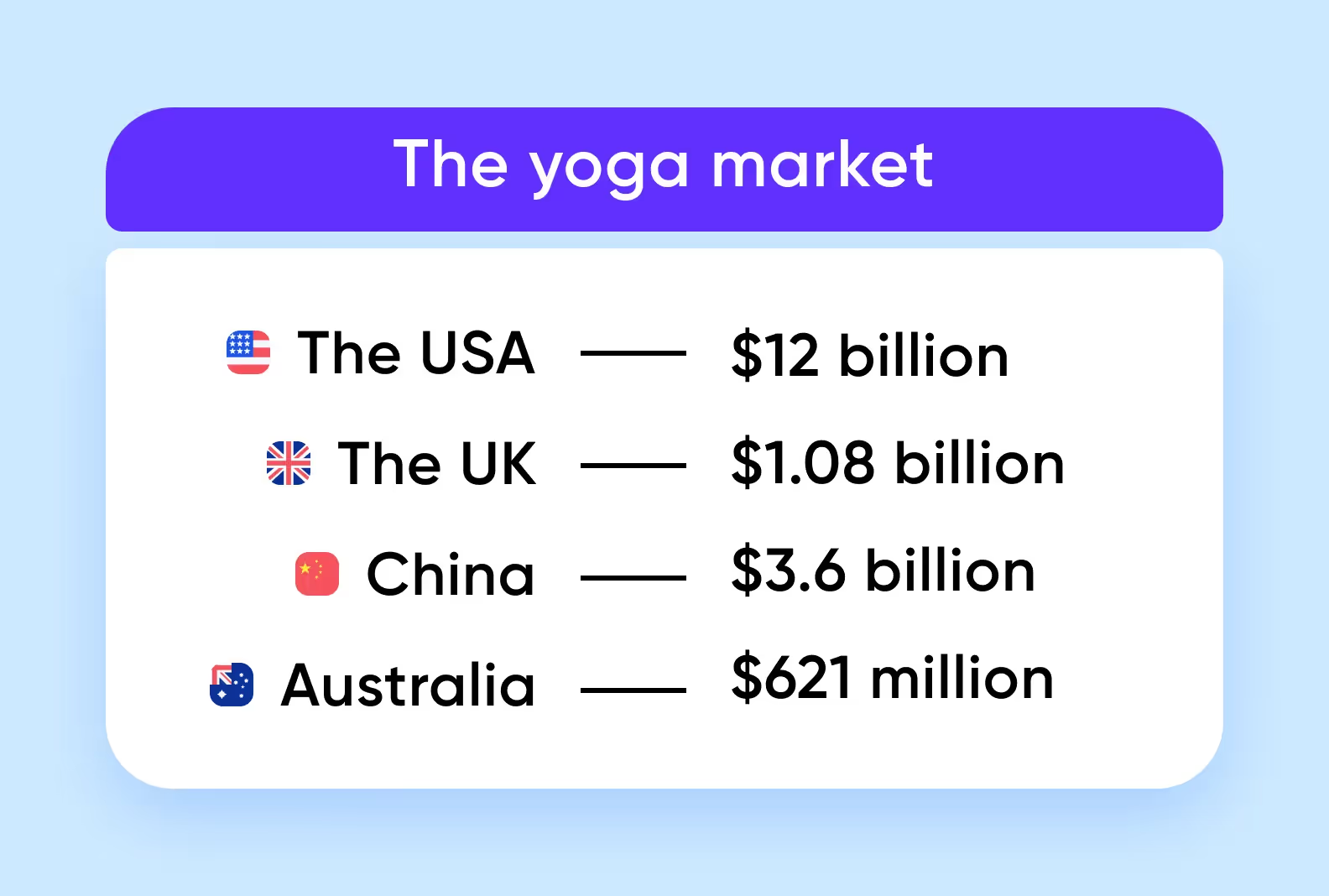
Yoga mobile apps come in two main types: apps for specific yoga studios and aggregator apps that offer classes from multiple yoga instructors.
A specific yoga studio app is an app designed for a particular yoga studio or chain of studios. These apps are tailored to the needs and offerings of that particular studio, and they provide features that are specific to that studio.
Studio apps typically offer features such as class schedules, teacher bios, and the ability to book classes and purchase packages directly through the app. These apps are a great way for yoga studios to connect with their clients and provide them with an easy way to access their services.
Aggregator apps, on the other hand, offer yoga practitioners a wider variety of yoga classes and teachers to choose from. These apps typically include features such as teacher profiles, class schedules, and the ability to filter classes based on difficulty level, duration, class format, and style. Yoga practitioners can select from a wide range of yoga activities, from traditional Hatha yoga to modern Vinyasa flows, and exercise with different teachers from all over the world.
So, these apps are more flexible and offer more variety than specific yoga studio apps, that’s why we will tell you more about yoga aggregator apps.
A yoga mobile app typically works by providing users access to various yoga classes and exercises that can be practiced on the go using a smartphone or tablet. Here’s a breakdown of how a typical aggregator yoga mobile app works:
Let’s dive into the world of yoga app development with the best yoga apps. They are available on iOS and Android. These apps will help you analyze your market competitors and understand trends in the yoga app industry.
Yoga Studio: Mind & Body is a comprehensive yoga application that offers a range of yoga classes and programs for all levels, from beginner to advanced. With over 80 yoga and meditation classes, the app provides detailed instructions and voice guidance for each pose. Yoga practitioners and yoga instructors can choose from pre-made classes based on their fitness goals or create their own custom classes.
Key features:

Asana Rebel is a yoga and fitness app that combines traditional yoga poses with high-intensity interval training (HIIT) for a more dynamic workout. The app offers a range of classes and programs, including yoga for weight loss, strength, and flexibility. This mobile application has fascinating yoga app features: a sleek and user-friendly interface, easy navigation, and smart customization.
Key features:
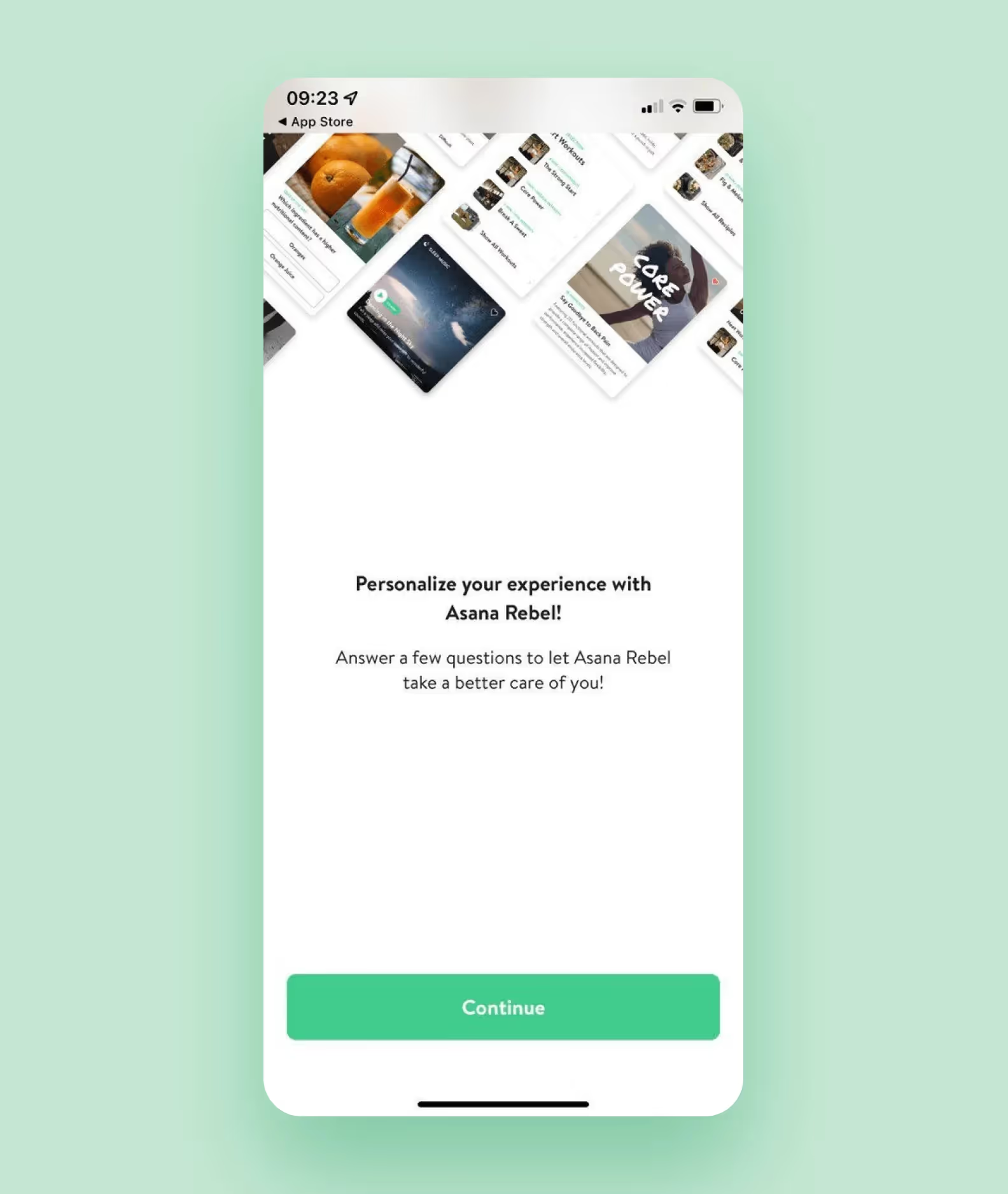
Daily Yoga is a popular yoga app with a variety of yoga classes and programs for all levels, from beginner to advanced. Apart from the wide range of yoga classes, Daily Yoga also offers an extensive range of guided meditations suitable for both novices and experienced meditators. Additionally, users can track their progress through the app and set personal goals, which are updated regularly to improve their yoga practice.
Key features:
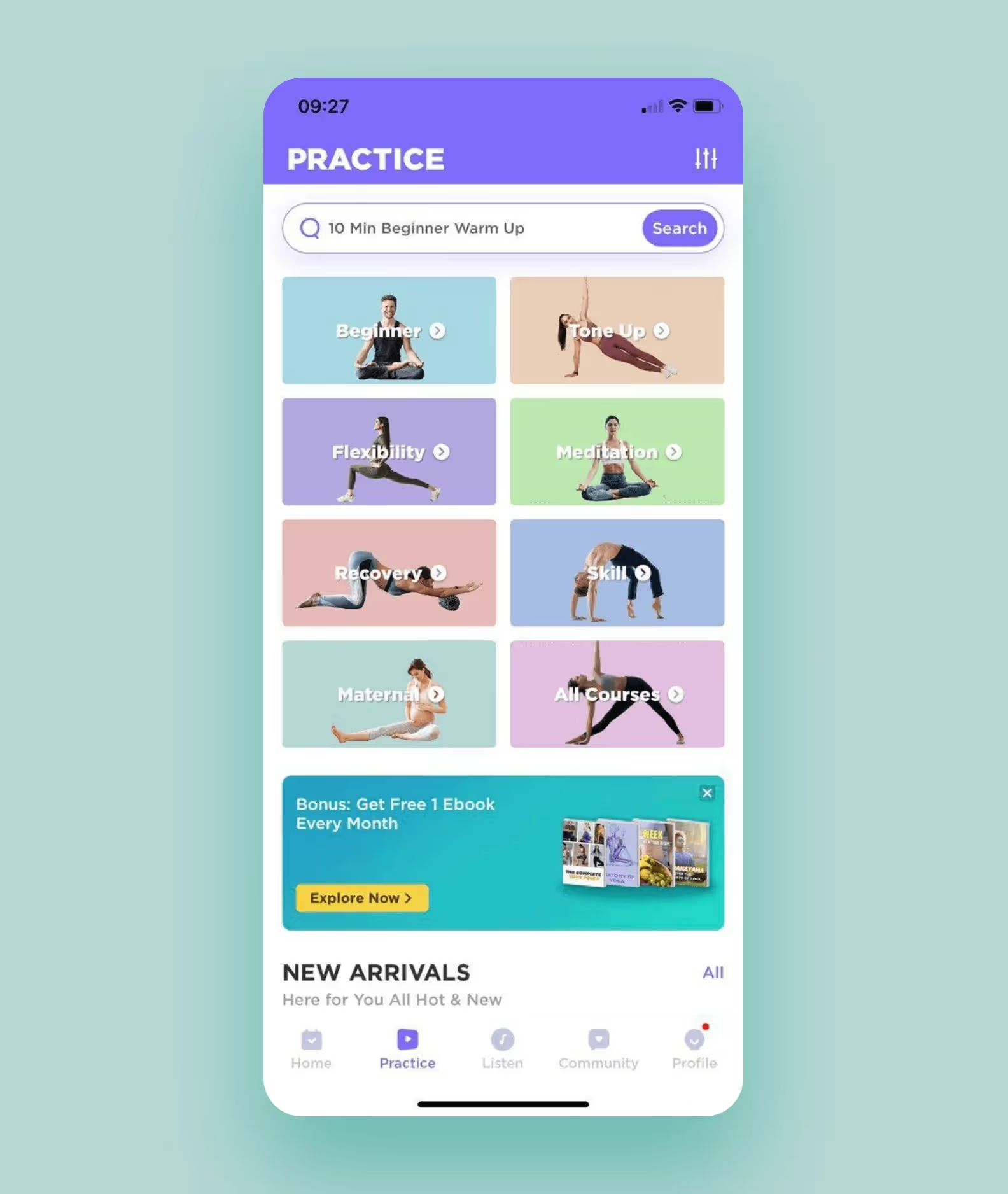
Down Dog is a unique yoga app that generates a new sequence for every practice, so users can enjoy a fresh experience every time they practice. With a variety of settings to customize the experience, including music, voice, and difficulty level, the app is perfect for both beginners and advanced practitioners.
Key features:
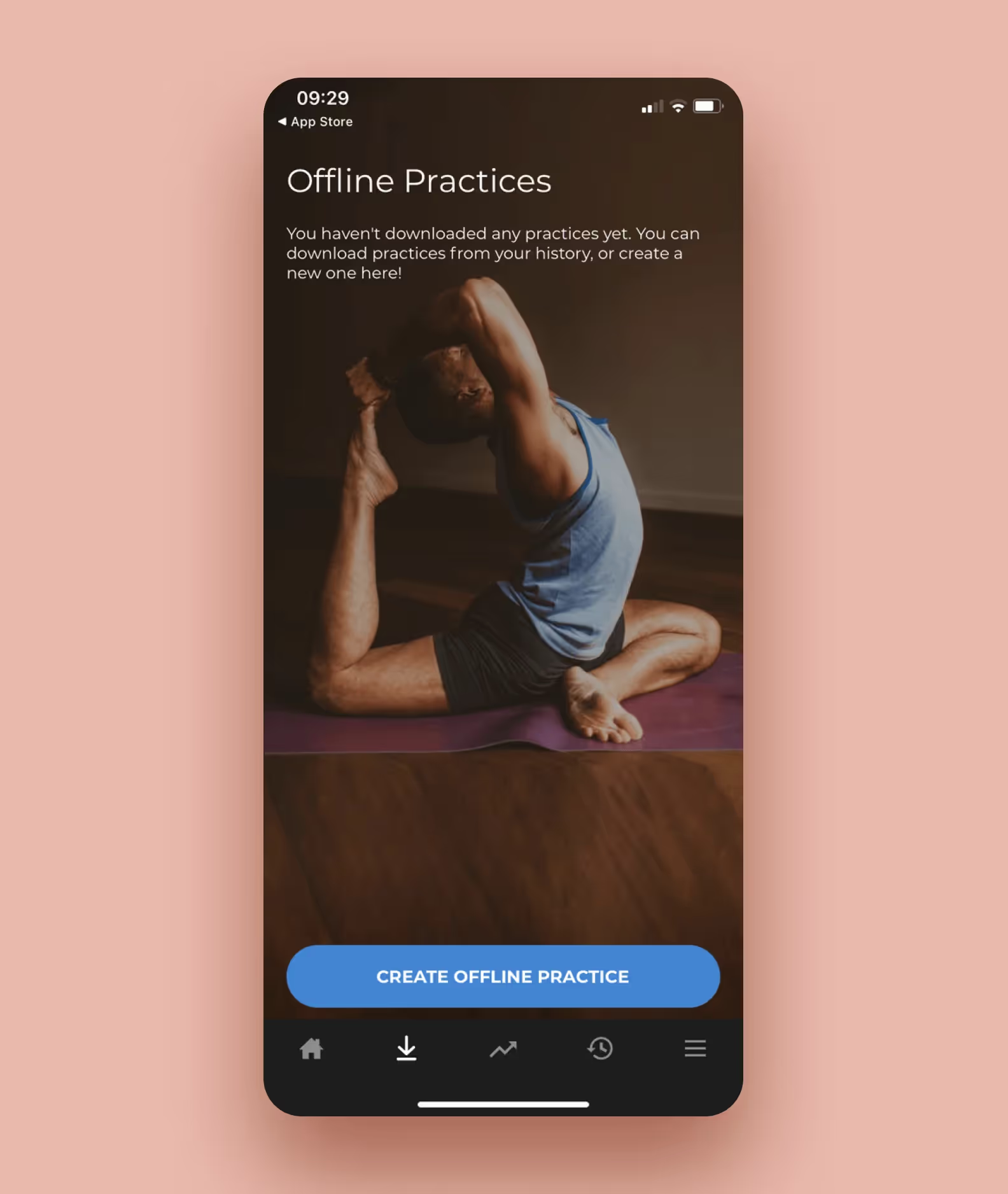
Glo is a premium yoga app that offers a range of yoga and meditation classes taught by world-class instructors. With over 4,000 classes and programs, users can enjoy a personalized experience and find classes tailored to their needs and preferences. The app also offers guided meditation, Pilates, and other fitness classes.
Key fetures:
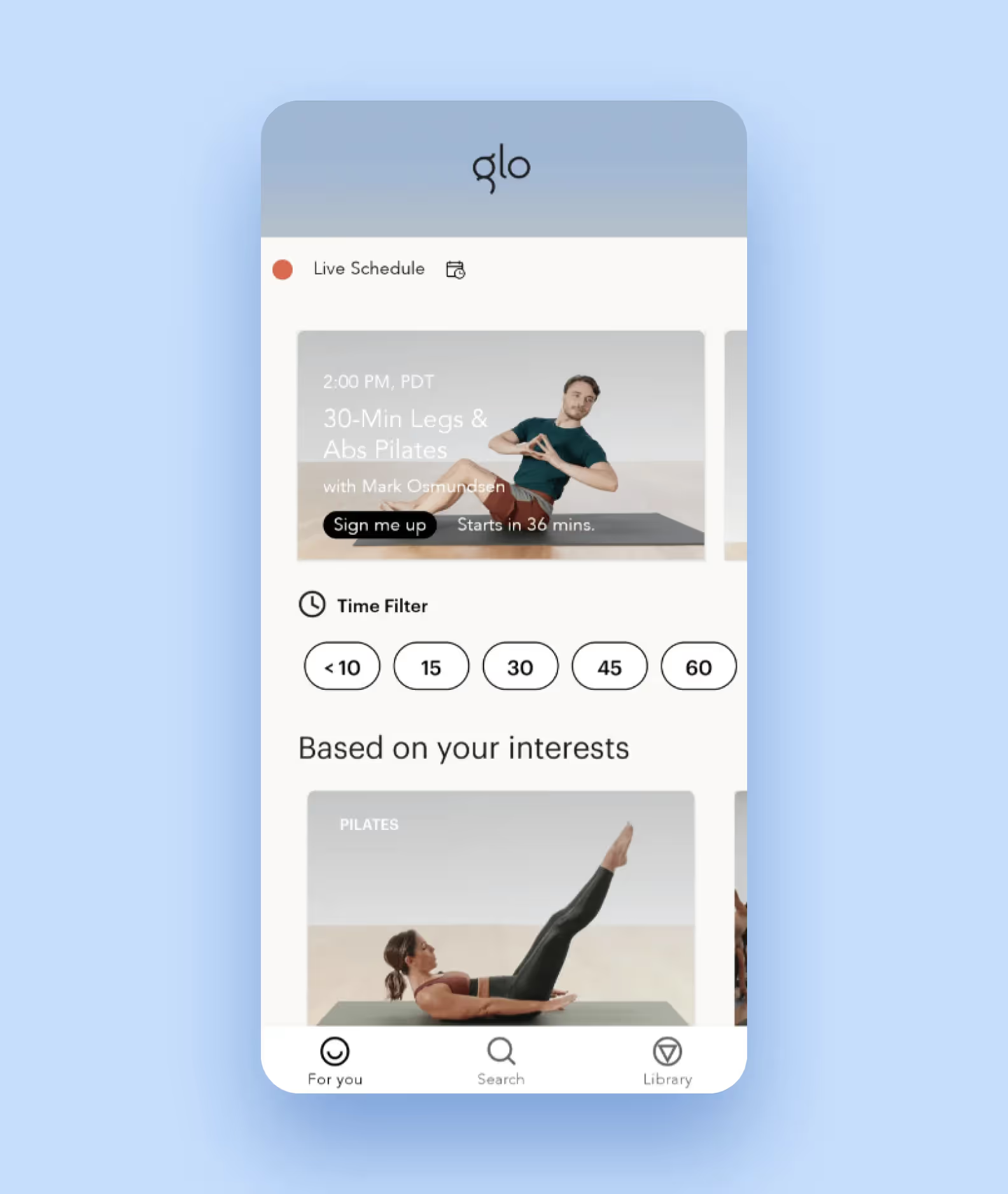
When it comes to developing your app, the core yoga app features ensure user authentication, content management, and payment processing. Here, we have listed the basic features of a yoga app.
User profiles. They help users to customize their experience, track their progress, set goals, and monitor their performance.
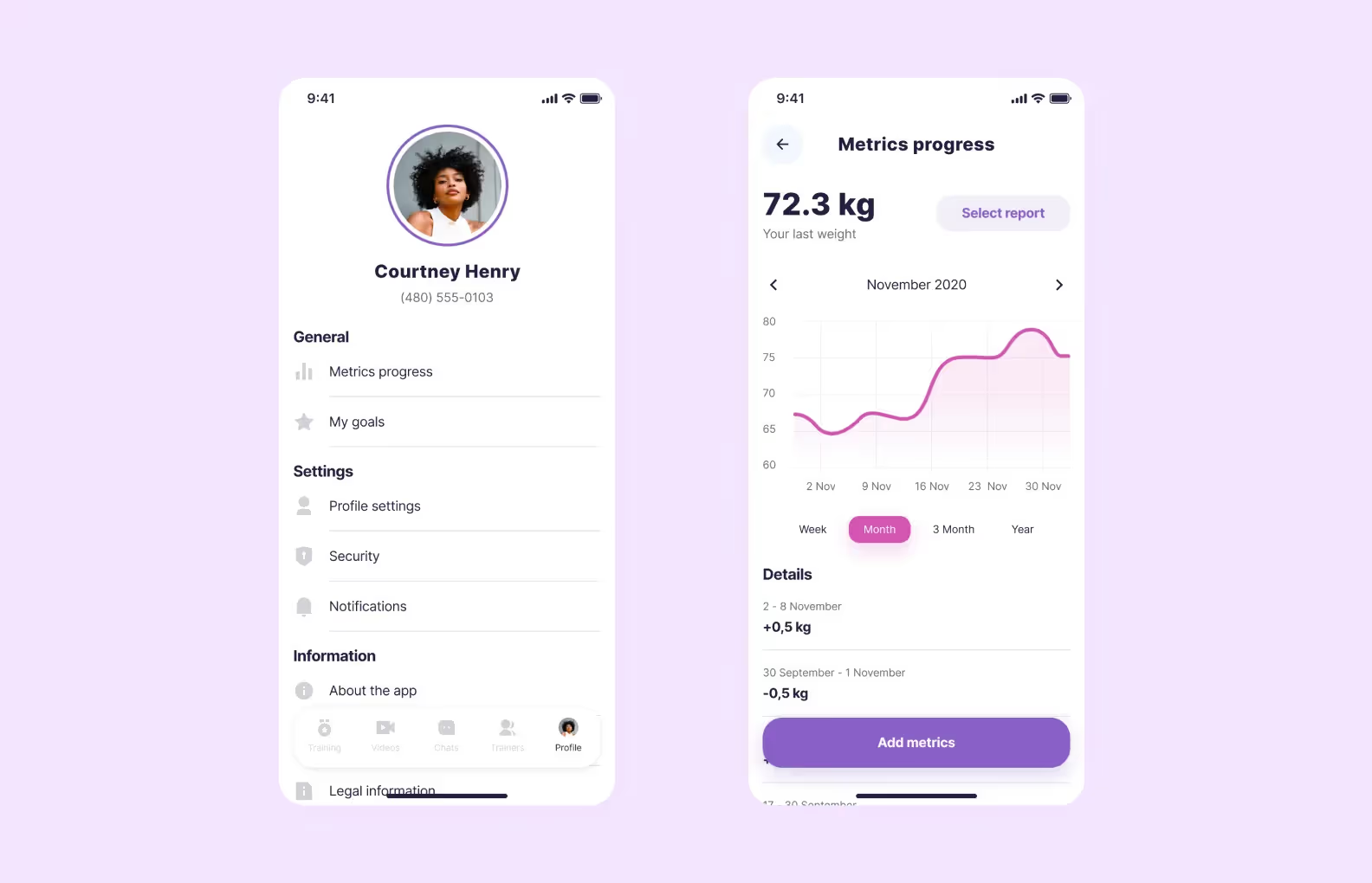
Search and filters. Such features enable users to quickly observe specific classes, teachers, or styles of yoga and find the yoga practice that meets their needs and preferences.
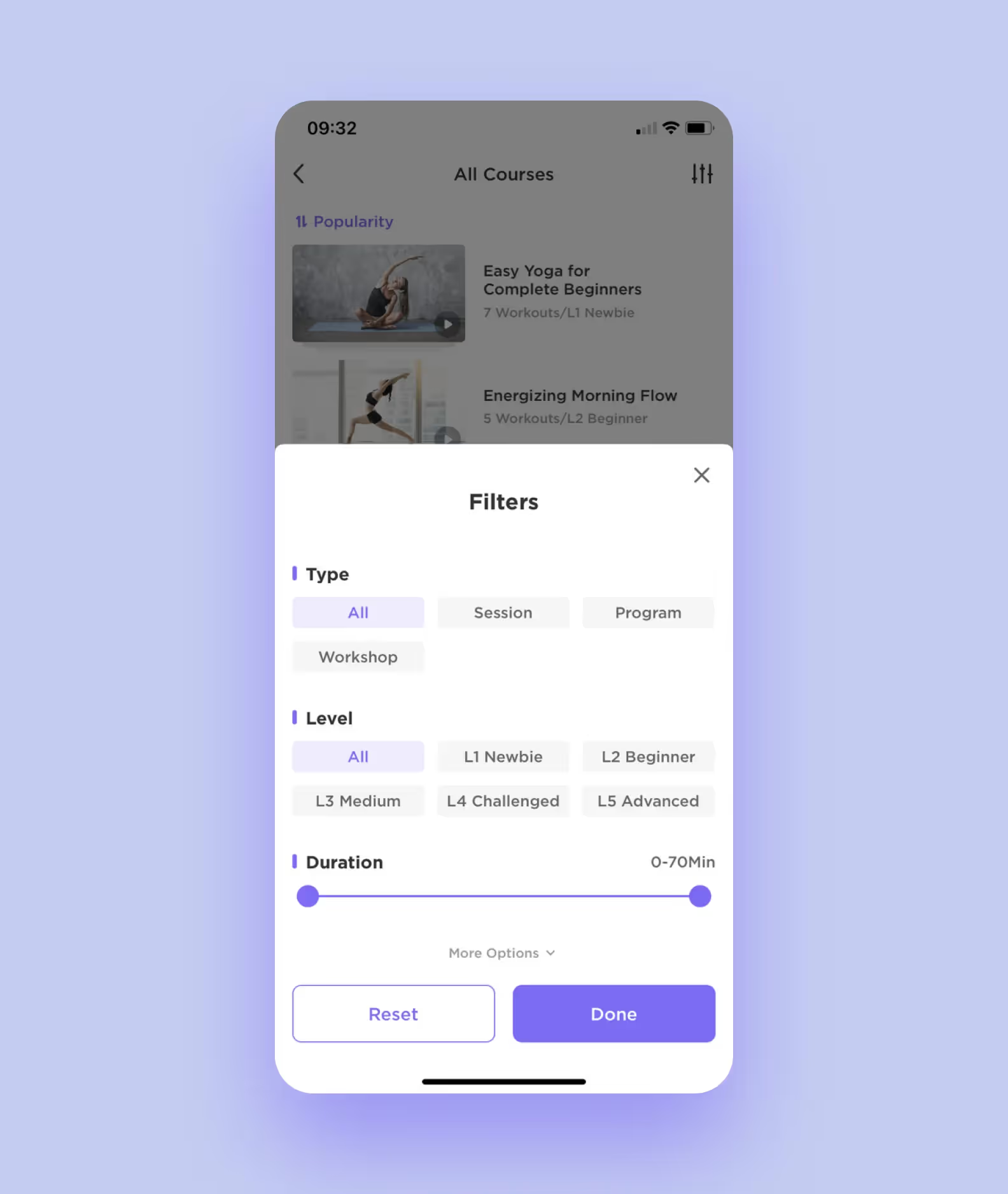
Personalized recommendations. This feature uses data such as the user’s previous practices, progress, and preferences to suggest classes and teachers that may be of interest to them.
Teacher profiles and credentials. Users can view the profiles and credentials of different yoga instructors, helping them pick the right teacher.
Class schedule and registration. Users can view class schedules and register for classes within the app.
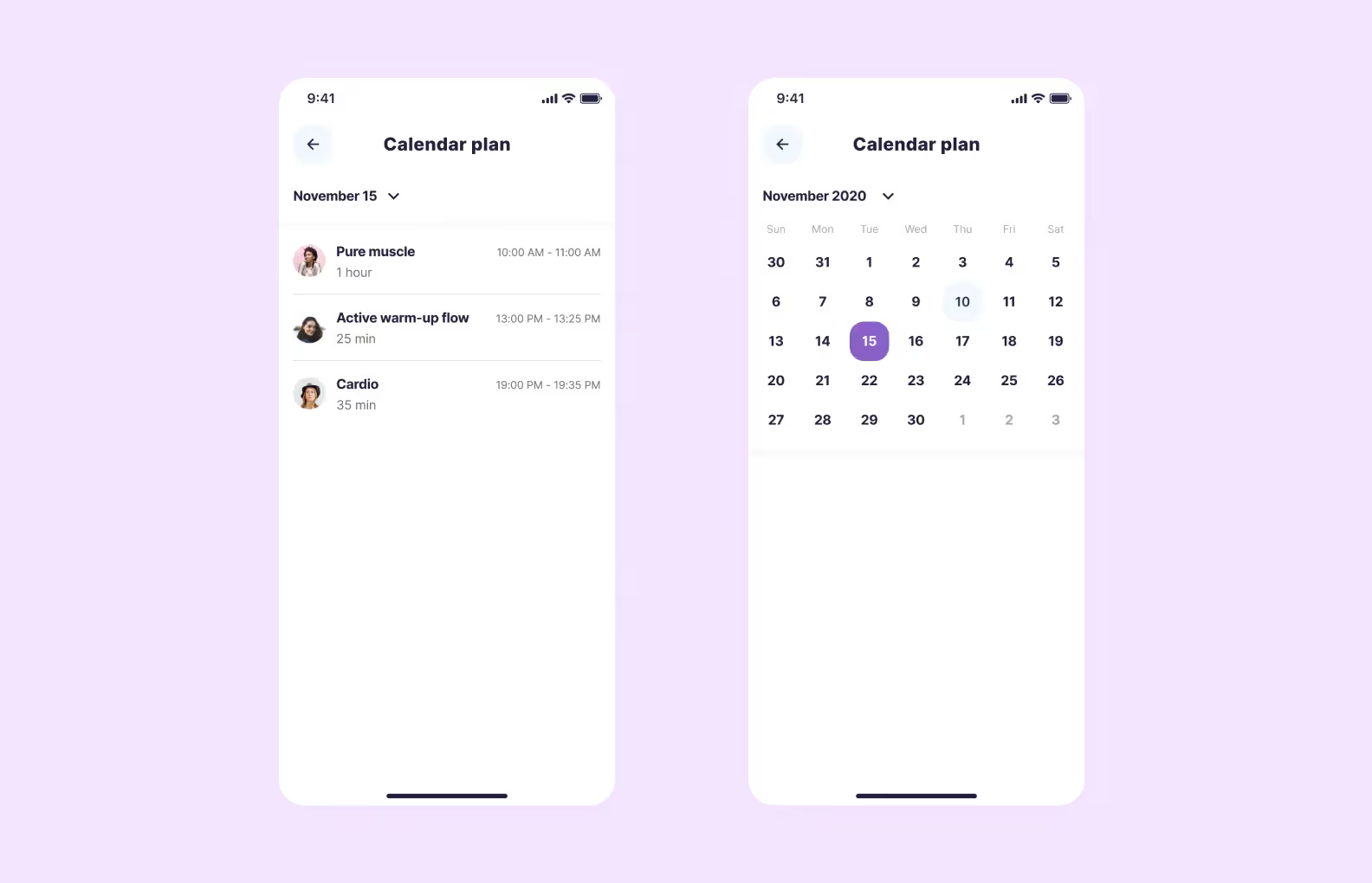
Live-streaming capabilities. Many aggregator apps offer live-streaming capabilities, allowing users to participate in live classes from their homes.
If you want to spice up your yoga app, there are a bunch of cool features you can add.
Integration with social media platforms. Aggregator apps often integrate with social media platforms, allowing users to share their progress and connect with other users outside the app.
Integration with wearable devices. Many yoga apps integrate with wearable devices like smartwatches or fitness trackers. This allows users to track their progress and monitor their heart rate or other biometrics during yoga sessions.
Gamification. Including gamification elements such as challenges, rewards, and badges can make practicing yoga more fun and engaging for users. So, such apps can send motivational messages and give game points for completing tasks. Points can be spent on improving the app and online and offline purchases.

Customized playlists and music integration. Many people like to practice yoga with music, and customized playlists or integration with music streaming services like Spotify can enhance the user experience.

Meditation and mindfulness features. Many yogis are also interested in meditation and mindfulness practices. Including features like guided meditations, breathing exercises, and stress reduction techniques can add value to your app and appeal to a wider audience.
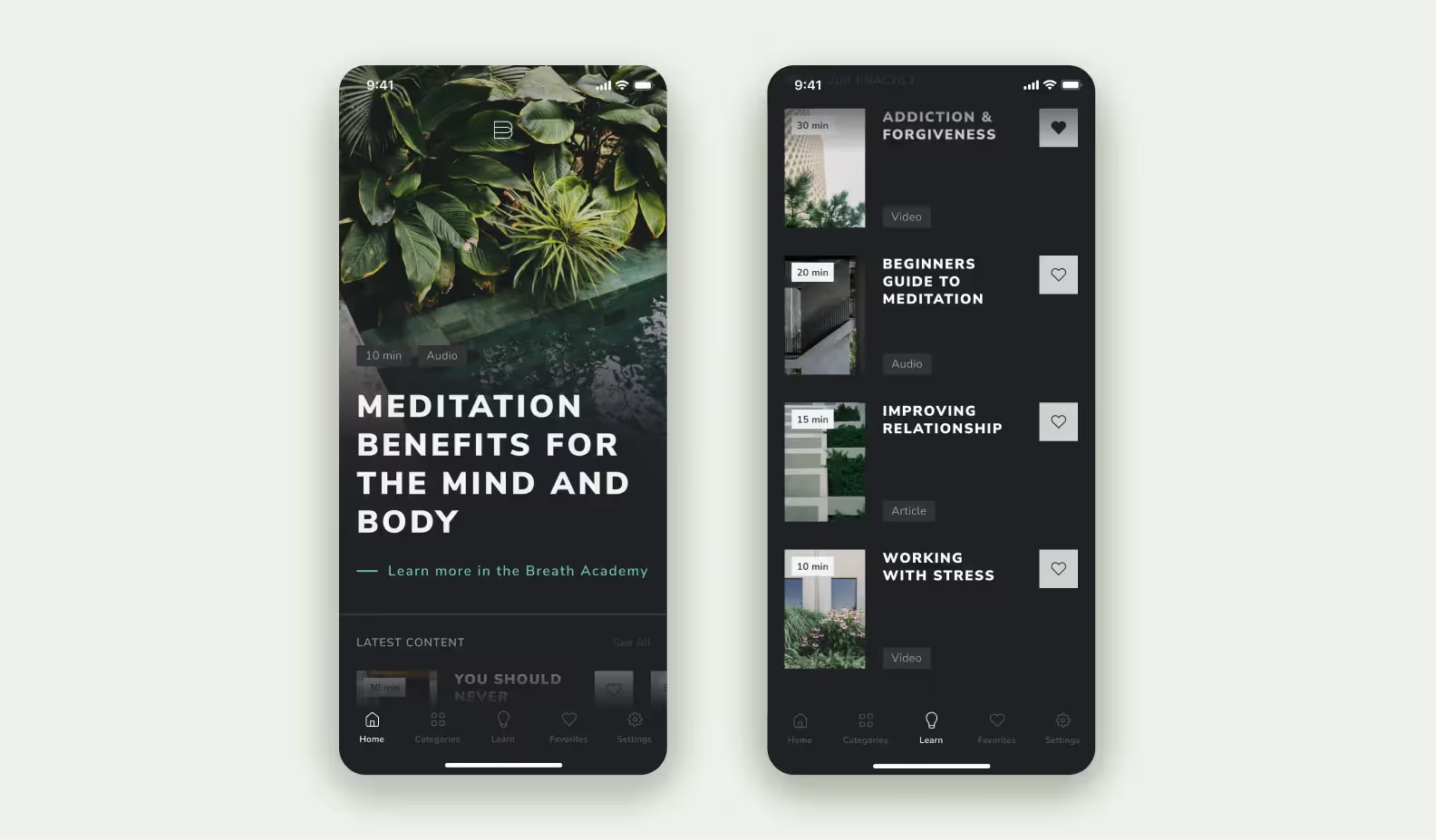
Additional resources. Offering users additional resources like movies, podcasts, and articles inside a yoga mobile app is a great way to enhance the user experience and create a one-stop shop for all yoga things. By providing users with a variety of resources, you can help them deepen their understanding of yoga, its history, and its benefits.

Let’s dive into monetization models and discover how to make money out of a yoga app. These are some of the most popular monetization models.
The freemium monetization model is a popular strategy used by yoga mobile apps to generate revenue. With this model, the app is available for free to download, but certain features and content are only accessible through in-app purchases or by upgrading to a premium version of the app. This approach allows users to try out the app and its basic features before committing to a paid subscription or purchase.
In-app purchases allow users to buy individual items or features within the app. These can be individual classes, access to guided meditations, or personalized workout plans. In-app purchases are usually one-time transactions, and users only pay for what they want or need at that particular moment. In-app purchases can provide a steady stream of revenue for yoga app developers, as users are often willing to pay for high-quality content and personalized experiences.
With this model, users pay a recurring fee for unlimited access to a variety of classes. This can be a great option for users who want to try different types of yoga or explore different teachers without having to purchase individual classes or commit to a long-term subscription. For example, a user can subscribe for a month to understand what types of yoga classes work best for them and extend the subscription later. To make this model successful, it is important to offer a wide range of high-quality classes that users find valuable and engaging.

Revenue-sharing models require strong partnerships and trust between the app owner and the teachers/studios. The app owner must also ensure that the revenue-sharing is fair and transparent for all parties involved. This monetization model can be particularly effective for smaller or independent yoga instructors and studios looking to expand their reach beyond their local community.
One of the ways to monetize your app is by adding ads from other brands. Brands increase their sales, the users get free classes, and advertising makes money.
We at Purrweb have developed health and fitness apps more than once. One of the examples of a meditation app we designed and developed was The Breath Method.
When it comes to developing your yoga app, the tech stack you choose will have a big impact on your app’s success. Your tech stack should be tailored to the features and functions you want to include in your app. Popular tech stack options for yoga app development include React Native, React.js, and Node.js.
If you’re looking for a web-based app, React.js and Node.js are two popular frameworks to consider. React.js is used for the frontend of your app, which is where users will interact with it. Node.js is used for the backend or the server side of things. Together, these frameworks can provide better performance and make your app run faster without any glitches.
React Native is a great choice for creating a mobile application that works on both iOS and Android. With React Native, you can build one app that works on both platforms, saving you time and money in yoga app development.
We have chosen to focus specifically on this set of instruments in Purrweb that have consistently demonstrated their effectiveness in our work. By honing in on these tools, we can ensure that we provide the best possible service to our clients.
Through our experience and research, we have found that these instruments offer a unique combination of accuracy, reliability, and practicality. Overall, these technologies offer robust development frameworks that enable developers to create fast, scalable, and user-friendly applications.
Now that we’ve figured out the types of yoga apps, killer features, and monetization options, let’s try to get a handle on how to develop a yoga mobile app.
Before you start developing an app, you need to analyze the market. Think about whom you want to help with your app and what they need.
If there are any doubts about the demand for the application, we offer our clients a Discovery Phase. Our team conducts an in-depth market analysis — collects information about potential users, analyzes competitors and generates hypotheses.
<div class="post_divider"></div>
Our clients wanted to develop an app for travel planning, but they were unsure of the demand for this idea. We identified the pain points of the target audience and highlighted the hypotheses we wanted to test.
Then, our team started interviewing the target audience. Based on the information obtained, they identified the segment that would be interested in the app. They also created an audience portrait. The clients confirmed the need for the app and were ready to move on to development.
<div class="post_divider"></div>
At this point, you need to understand what features your application should have. Will it be an app with different short yoga sessions? Or will it be possible to sign up for a particular trainer? What monetization model will you use? Answer these and other questions to understand what your app is going to look like.
You need to pick references for the design of the application and make expectations from the project. Then, the UI/UX design team will make the first concepts and present them to you. Over several iterations, you can work together to create the best design for your app. This is the stage of the mobile yoga app development when you have every chance to make the user experience exciting.
The developers will work on the architecture and the interface on both the client and server side. Depending on the features and functions you want to include, the process of mobile yoga app development will be different.
Quality assurance is an essential part of the development process, which helps ensure that the app functions smoothly and is free of any glitches or bugs.
If you’re planning to launch your yoga app, you can follow these steps to create hype around it:
By following these marketing strategies, you can ensure a successful launch for your yoga app and make it stand out in the market.
After the release, everything is just beginning. You can eventually start getting comments from the first users and see if your app provides a good user experience. Be sure to analyze user feedback to further update and improve your app.
Before you decide how much to invest in building your yoga mobile app, there are a few factors to consider:
Make sure to evaluate your available time and resources and explore different options to find the best rates.
The cost of a yoga mobile app development depends on the factors listed above and varies from $50,000 to $55,000.
➡️ If you are planning to create a yoga app, tell our experts about it <a class="blog-modal_opener">in the form.</a> Get your yoga app idea started today! 👉